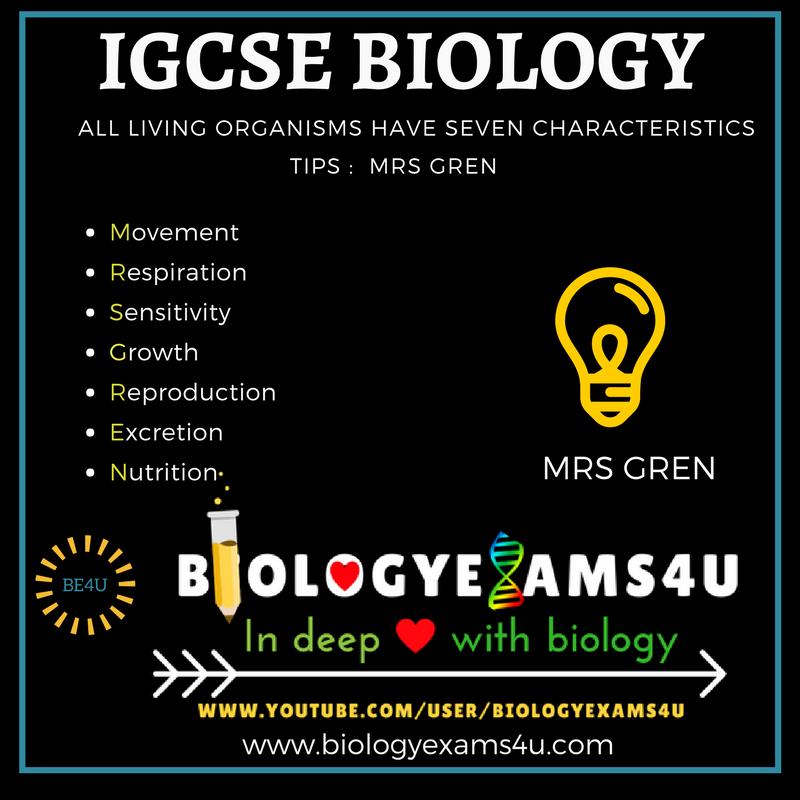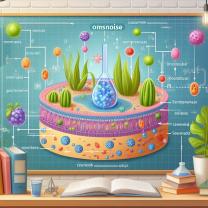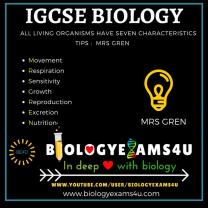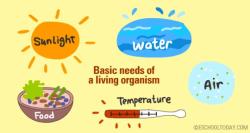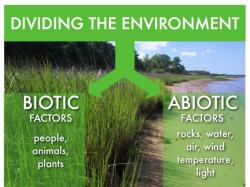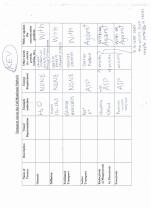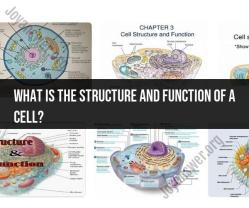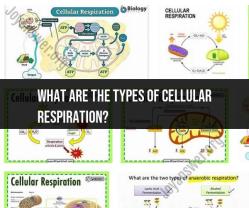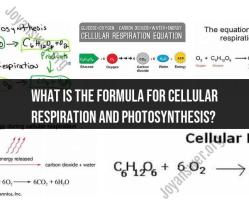What are the main characteristics of organisms?
Living organisms, or living beings, exhibit certain characteristics that distinguish them from non-living entities. The main characteristics of organisms include:
Cellular Organization: Living organisms are composed of one or more cells, which are the basic structural and functional units of life. Cells can be unicellular (single-celled) or multicellular (composed of multiple cells).
Metabolism: Organisms carry out metabolic processes, which involve the conversion of energy from one form to another. This includes processes such as obtaining nutrients, breaking them down for energy, and eliminating waste.
Homeostasis: Living organisms maintain internal stability and balance in response to changes in their external environment. Homeostasis ensures that internal conditions remain within a narrow range conducive to life.
Heredity: Living organisms possess genetic material (DNA or RNA) that is passed on from one generation to the next. This genetic material carries the instructions for the development, growth, and functioning of the organism.
Response to Stimuli: Organisms can respond to external stimuli from their environment. This responsiveness allows them to adapt to changing conditions and increases their chances of survival.
Growth and Development: Living organisms exhibit growth, which involves an increase in size or number of cells. Development refers to the process of maturation and differentiation from a simple to a more complex form.
Reproduction: Living organisms have the ability to produce offspring, ensuring the continuation of their species. Reproduction can occur through asexual or sexual means.
Adaptation: Living organisms can evolve and adapt to changes in their environment over time. This adaptation allows them to better survive and thrive in diverse conditions.
Movement: While not all living organisms exhibit movement, many have the ability to move in response to stimuli. Movement can be at the cellular level (e.g., cell locomotion) or at the organismal level.
These characteristics collectively define life, and they are applicable to a wide range of living beings, from microorganisms to complex multicellular organisms. It's important to note that these traits are not exclusive to any specific group of organisms but are fundamental to the nature of living entities.
Unveiling the Essence of Life: Exploring the Characteristics of Living Organisms
Delving into the world of living organisms reveals a fascinating tapestry of shared traits and remarkable diversity. Here's a breakdown of your questions:
1. Key Characteristics of Living Organisms:
- Cellular Basis: All living things are composed of one or more cells, the fundamental units of life. These cells carry out essential functions like energy production, growth, and reproduction.
- Organization: Living organisms exhibit different levels of organization, from simple single-celled beings to complex multicellular structures with specialized tissues and organs.
- Metabolism: Organisms transform energy from their environment through various chemical reactions, enabling them to power vital processes like growth, movement, and reproduction.
- Homeostasis: Living things maintain a relatively stable internal environment (pH, temperature, etc.) despite external changes, ensuring optimal functioning.
- Growth and Development: Organisms, unlike non-living things, grow and develop over time, progressing from simpler to more complex states.
- Reproduction: Living organisms perpetuate their existence through various forms of reproduction, ensuring the continuation of species.
- Response to Stimuli: Organisms display sensitivity to their environment, reacting to changes in light, temperature, or other stimuli for survival and adaptation.
- Evolution: Populations of organisms change over time through the process of natural selection, adapting to their environment and giving rise to new variations.
2. Traits of Life in Structure and Behavior:
- Cellular structures: Cells of living organisms have distinct membranes, DNA, and specialized organelles that perform specific functions, showcasing organized complexity.
- Movement: Many organisms exhibit locomotion, foraging for food, escaping predators, or migrating. Even plants display subtle movements in response to stimuli.
- Feeding and nutrition: Living things take in and utilize nutrients from their environment for growth, energy, and repair, employing diverse feeding strategies like photosynthesis, scavenging, or predation.
- Reproduction: From intricate mating rituals to internal fertilization and seed dispersal, the varied methods of reproduction ensure the continuity of life.
- Adaptation: Organisms develop features and behaviors that suit their specific environments, like heat-resistant coats in desert animals or camouflage in camouflaged insects.
3. Variations in Characteristics across Organisms:
- Unicellular vs. multicellular: Organisms range from simple single-celled bacteria to complex multicellular animals and plants, each with unique structures and functions.
- Prokaryotic vs. eukaryotic cells: While all cells share basic life processes, they differ in internal complexity. Prokaryotic cells lack membrane-bound organelles, while eukaryotic cells possess a nucleus and other specialized structures.
- Autotrophs vs. heterotrophs: Photosynthetic organisms like plants are autotrophs, producing their own food, while heterotrophs like animals depend on other organisms for energy.
- Sexual vs. asexual reproduction: The means of reproduction vary wildly, with some organisms employing complex sexual processes involving fertilization, while others reproduce asexually through simple cell division.
4. Classification and Categorization of Organisms:
- Taxonomy: Scientists classify organisms based on shared characteristics, organizing them into a hierarchical system of kingdoms, phyla, classes, orders, families, genera, and species.
- Morphological features: Physical characteristics like body structure, limbs, appendages, and cellular details play a significant role in classification.
- Physiological and biochemical similarities: Shared metabolic pathways, genetic makeup, and protein structures also provide valuable insights for categorization.
- Evolutionary relationships: Modern taxonomy increasingly takes into account evolutionary history and ancestral connections between different groups of organisms.
5. Environmental Factors Shaping Organism Characteristics:
- Habitat: The physical environment, including temperature, water availability, and light levels, influences the development of adaptations like thick fur in polar animals or water-repellent feathers in aquatic birds.
- Resource availability: Organisms adapt their feeding strategies and body structures to utilize available resources efficiently, like long necks in giraffes reaching high leaves or specialized beaks in birds for specific food types.
- Predation and competition: The need to avoid predators and compete for resources drives the evolution of defenses, camouflage, and other adaptations that enhance survival and reproduction.
- Climatic changes: Organisms adapt to changing environmental conditions over time, either through genetic mutations or behavioral modifications, ensuring their continued existence.
Understanding the characteristics of living organisms unveils the intricate dance between structure, behavior, and environmental influences. By appreciating the diversity and shared traits, we gain a deeper understanding of the remarkable tapestry of life on Earth.
